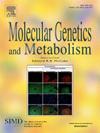The current social status in adult patients with urea cycle disorders in Japan
IF 3.7
2区 生物学
Q2 ENDOCRINOLOGY & METABOLISM
引用次数: 0
Abstract
Urea cycle disorders (UCDs) are inherited metabolic conditions that lead to inadequate nitrogen detoxification due to defects in urea cycle enzymes or transporters. The severity of UCDs is classified into two types: neonatal onset (severe) and late onset (often milder). This cross-sectional study aimed to assess the levels of intelligence, developmental disabilities, and social functioning in adult patients with UCDs in Japan. A total of 116 adult patients with UCDs were enrolled in the study, including 10 with carbamoyl phosphate synthetase 1 deficiency, 69 with ornithine transcarbamylase deficiency (OTCD), 17 with argininosuccinate synthetase deficiency, 9 with argininosuccinate lyase deficiency, 4 with arginase 1 deficiency, and 7 with Hyperornithinemia-Hyperammonemia-Homocitrullinuria syndrome. Of these, 25 (21.6 %) developed symptoms during the neonatal period (within 28 days after birth), while 86 (74.1 %) presented with symptoms after 28 days of age. The age of onset was unknown in 5 patients. This study included 111 surviving patients and 5 deceased patients (3 with OTCD and 2 with CPS1D). Fifty-three patients (45.7 %) experienced intellectual disabilities, while 48 (41.4 %) had non-intellectual disabilities. Additionally, learning disorders and communication disorders were common among many of the study participants. Sixty patients (51.7 %) graduated from regular high school, and most patients with intellectual disabilities graduated from special education schools. Almost half of the patients (51, 44.0 %) were able to obtain jobs, including simple tasks in supported workplaces, and received compensation for their work. Notably, more patients with OTCD could demonstrate higher social performance including experience of higher education and marriage. However, even OTCD patients without intellectual disabilities often struggled with specific neurobehavioral issues. This study provides information on the social situation of adult UCD patients and underlines the importance for clinicians, as well as society and communities, to understand the ongoing challenges faced by patients with UCDs in order to provide better support.
日本成人尿素循环障碍患者的社会现状
尿素循环障碍(UCDs)是一种遗传性代谢疾病,由于尿素循环酶或转运体的缺陷导致氮解毒不足。ucd的严重程度分为两种类型:新生儿发病(严重)和晚发病(通常较轻)。本横断面研究旨在评估日本成年ucd患者的智力、发育障碍和社会功能水平。该研究共纳入116例成人UCDs患者,其中10例为氨甲酰磷酸合成酶1缺乏症,69例为鸟氨酸转氨基甲酰基酶缺乏症(OTCD), 17例为精氨酸琥珀酸合成酶缺乏症,9例为精氨酸琥珀酸裂解酶缺乏症,4例为精氨酸酶1缺乏症,7例为高鸟氨酸血症-高氨血症-高糖氨酸尿综合征。其中,25例(21.6%)在新生儿期(出生后28天内)出现症状,86例(74.1%)在28天后出现症状。5例患者发病年龄不详。本研究纳入111例存活患者和5例死亡患者(3例OTCD和2例CPS1D)。智力残疾53例(45.7%),非智力残疾48例(41.4%)。此外,学习障碍和沟通障碍在许多研究参与者中很常见。60例(51.7%)智力障碍患者毕业于普通高中,大多数智力障碍患者毕业于特殊教育学校。几乎一半的患者(51,44.0%)能够找到工作,包括在支持的工作场所做简单的工作,并获得工作补偿。值得注意的是,更多的强迫症患者表现出更高的社会绩效,包括高等教育和婚姻经验。然而,即使是没有智力障碍的强迫症患者也经常与特定的神经行为问题作斗争。这项研究提供了成人UCD患者的社会状况信息,并强调了临床医生、社会和社区了解UCD患者面临的持续挑战的重要性,以便提供更好的支持。
本文章由计算机程序翻译,如有差异,请以英文原文为准。
求助全文
约1分钟内获得全文
求助全文
来源期刊

Molecular genetics and metabolism
生物-生化与分子生物学
CiteScore
5.90
自引率
7.90%
发文量
621
审稿时长
34 days
期刊介绍:
Molecular Genetics and Metabolism contributes to the understanding of the metabolic and molecular basis of disease. This peer reviewed journal publishes articles describing investigations that use the tools of biochemical genetics and molecular genetics for studies of normal and disease states in humans and animal models.
 求助内容:
求助内容: 应助结果提醒方式:
应助结果提醒方式:


